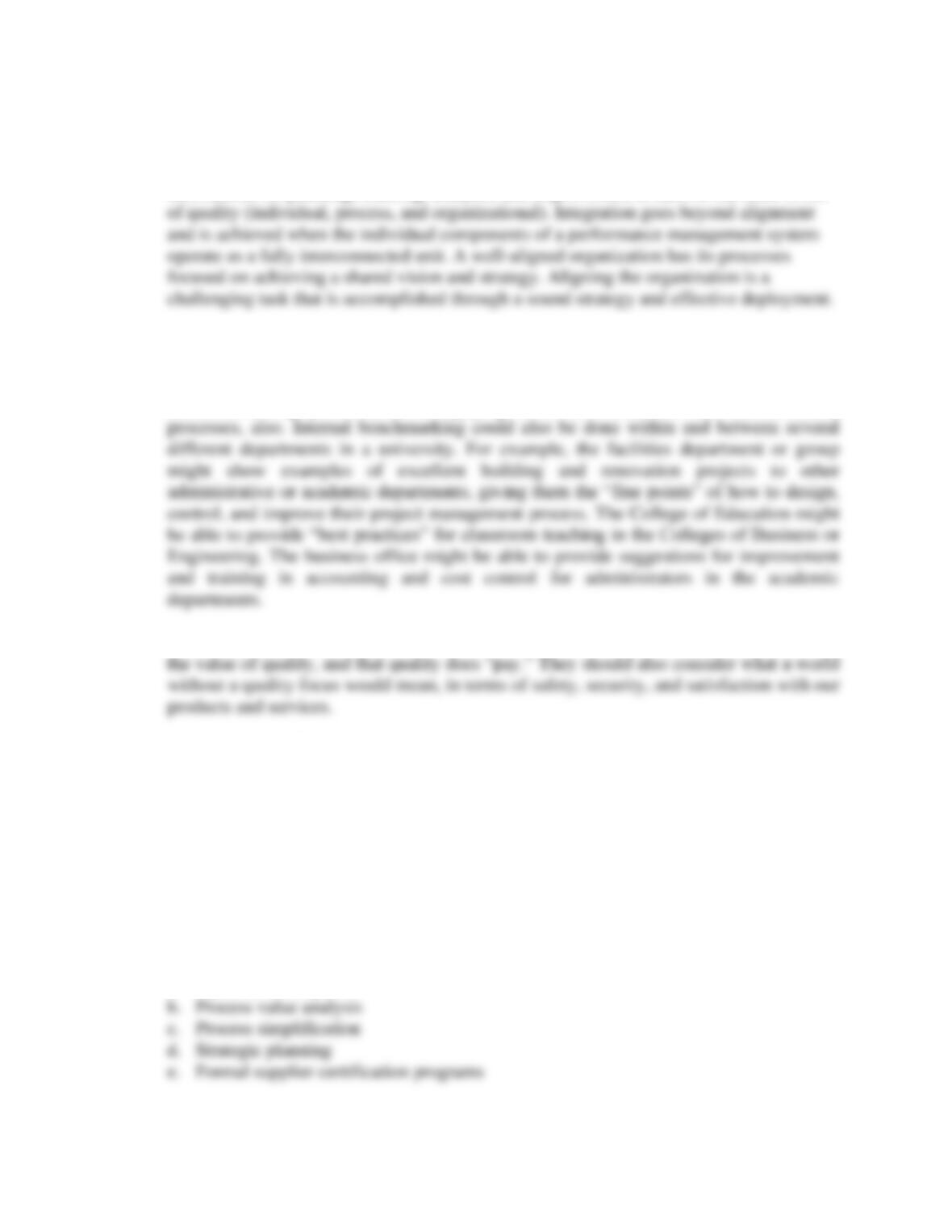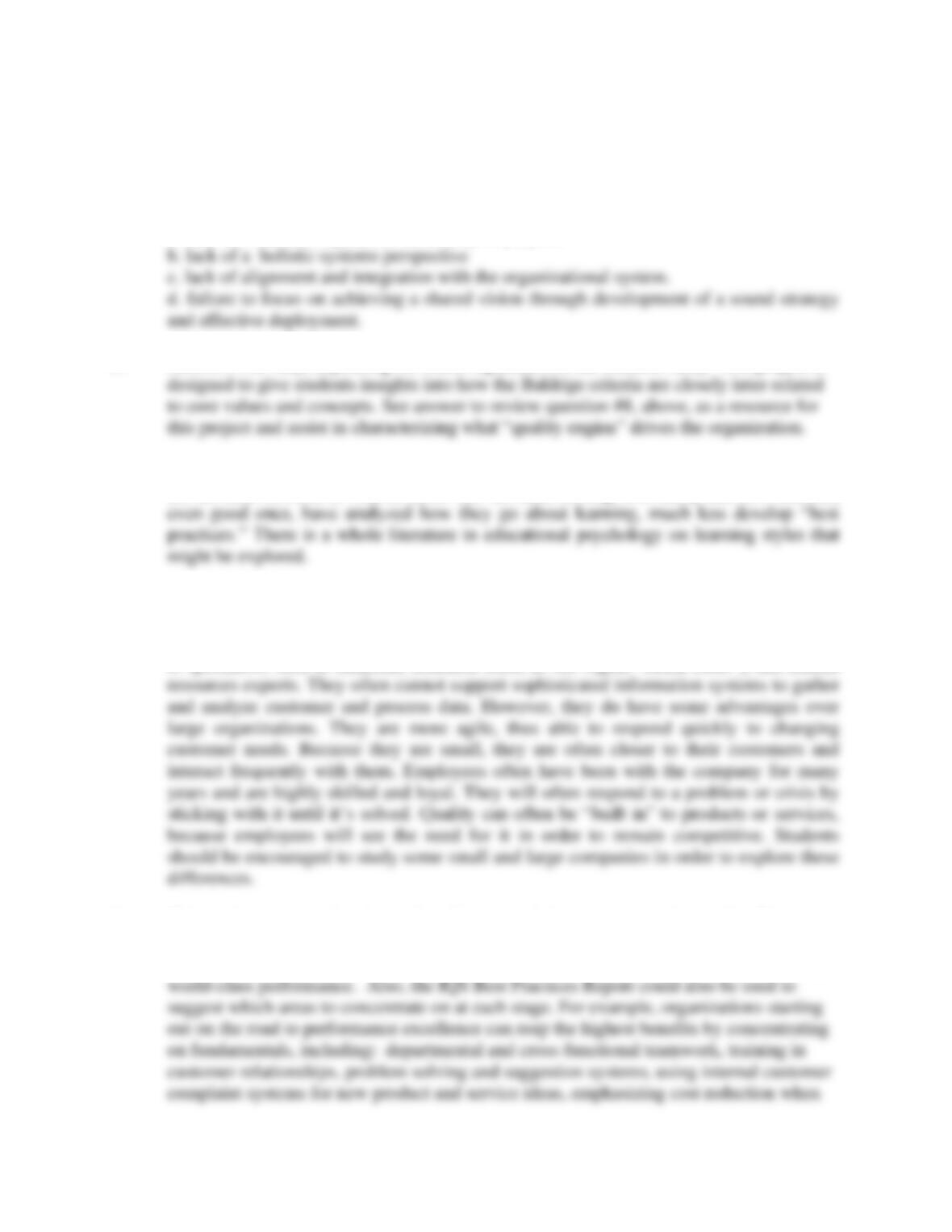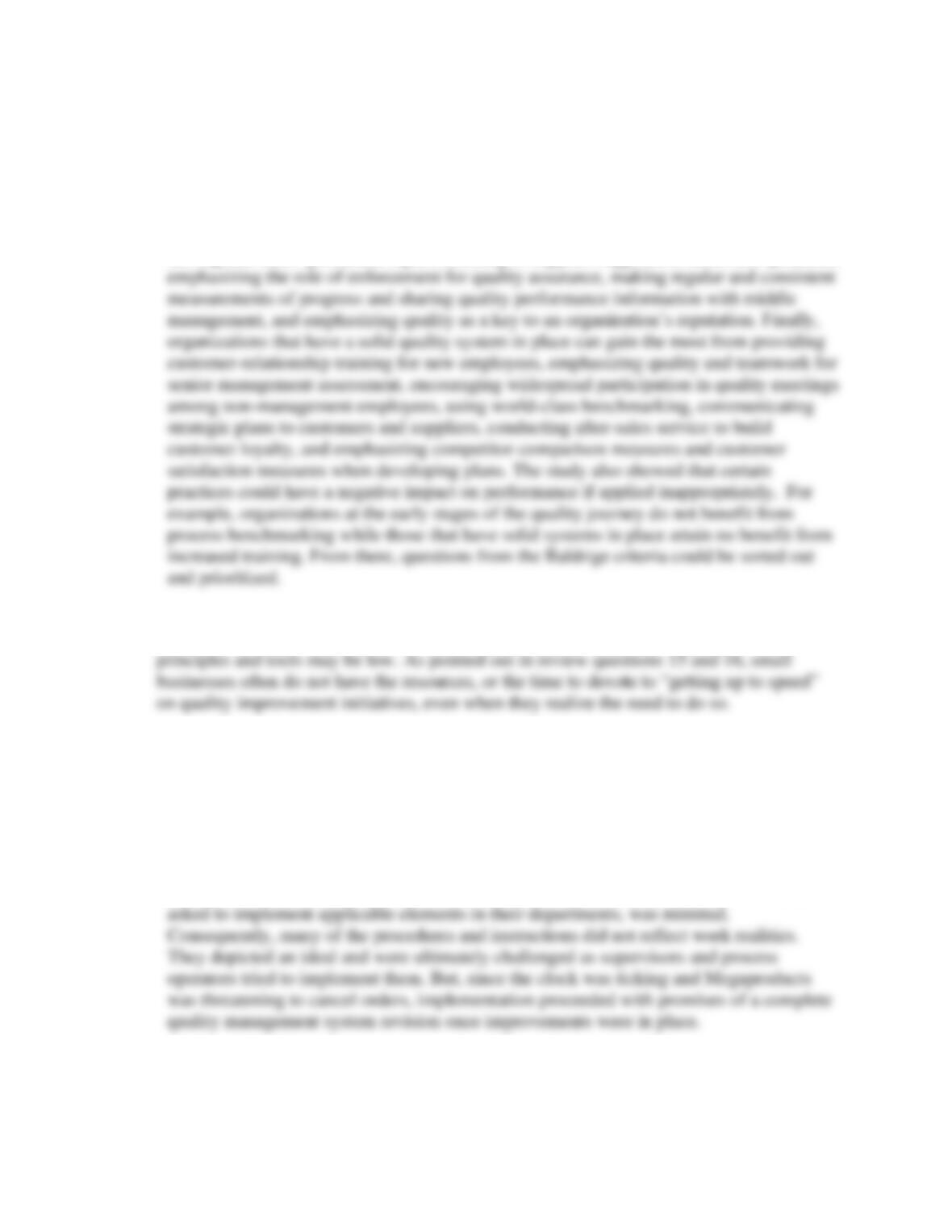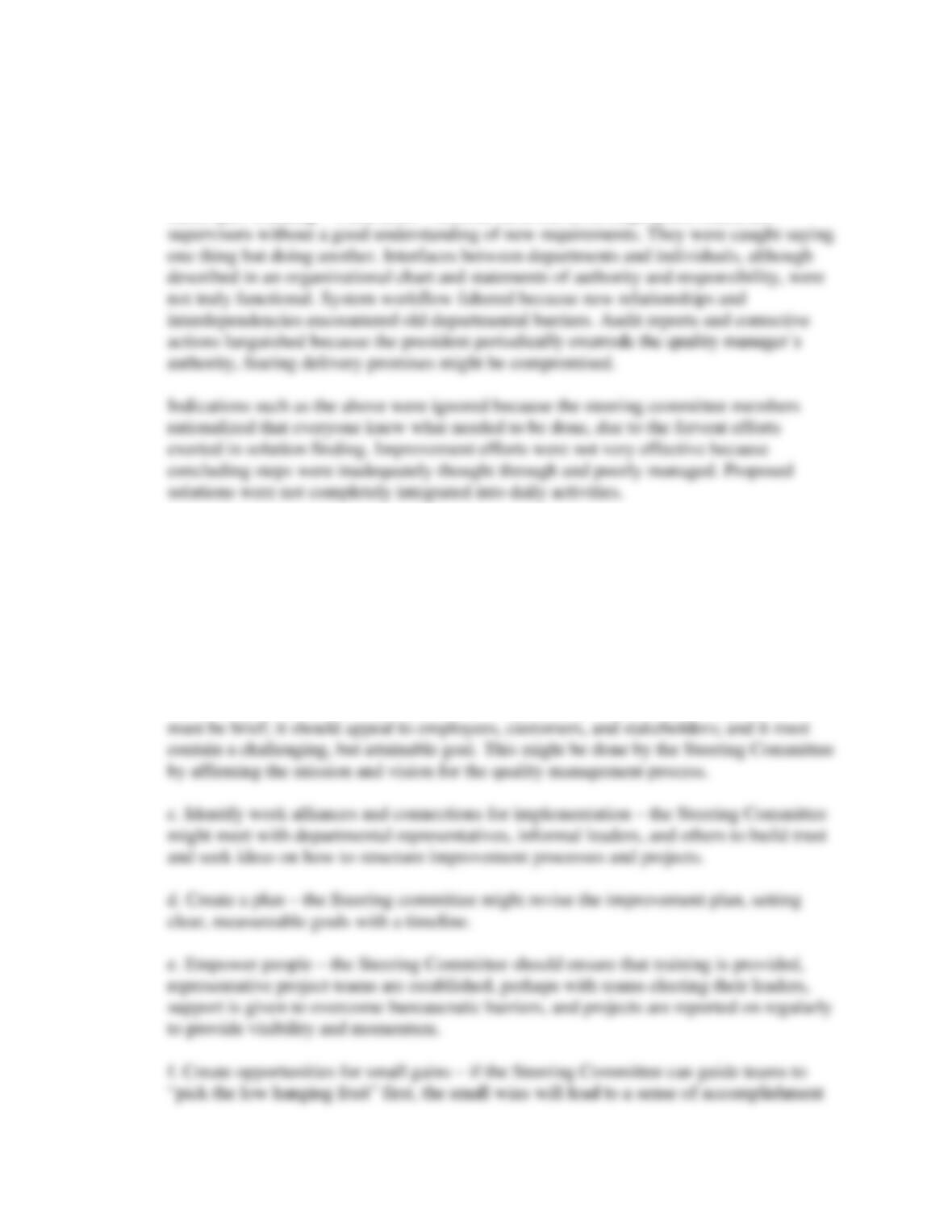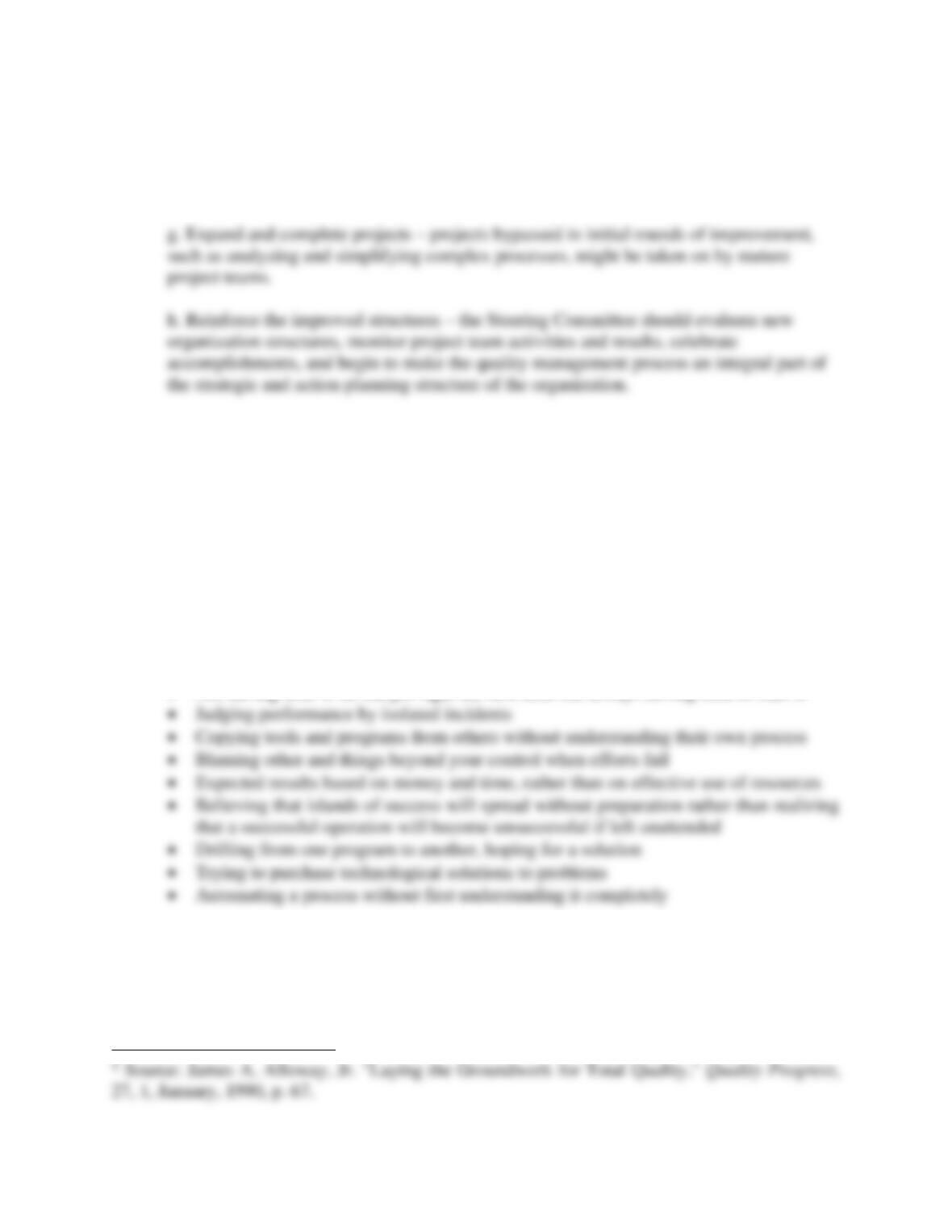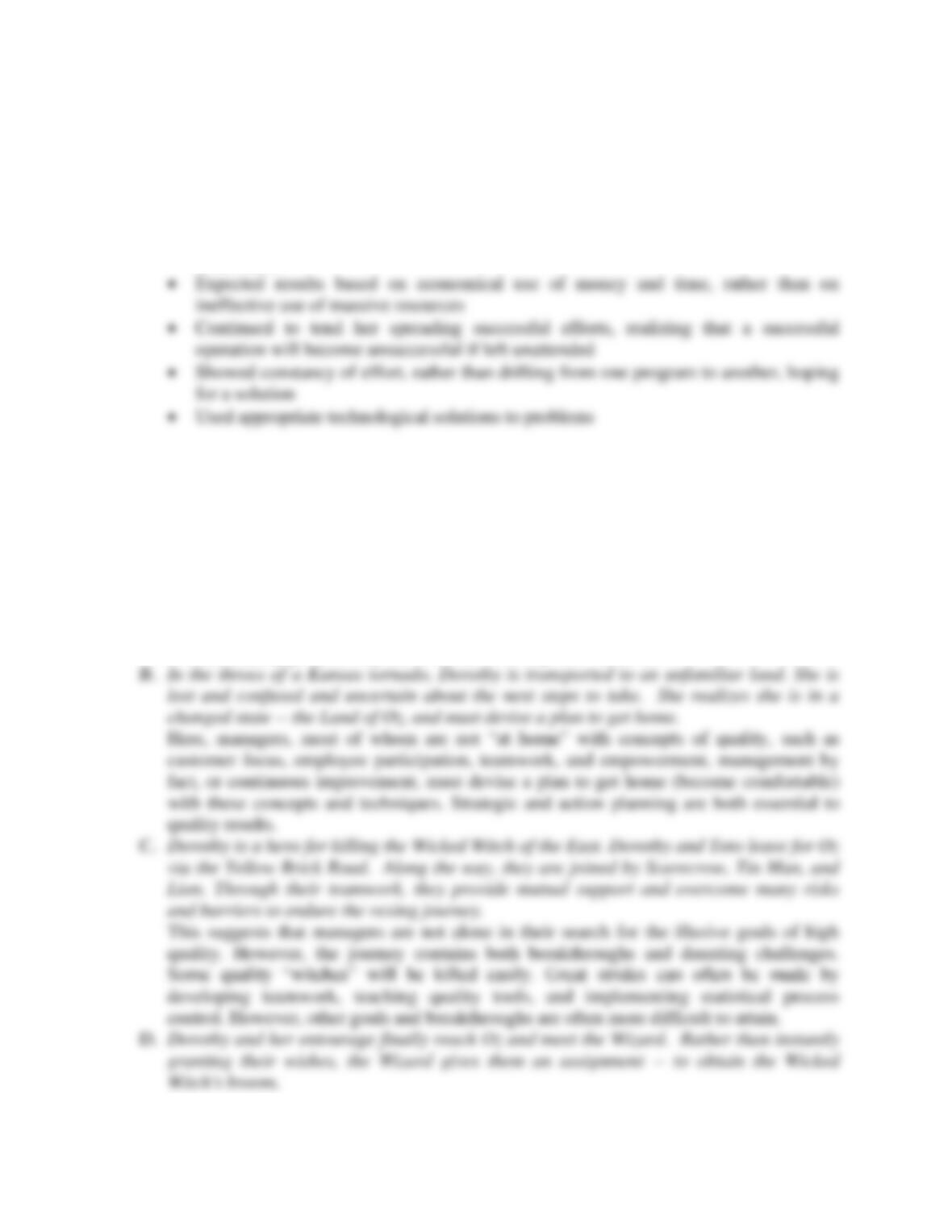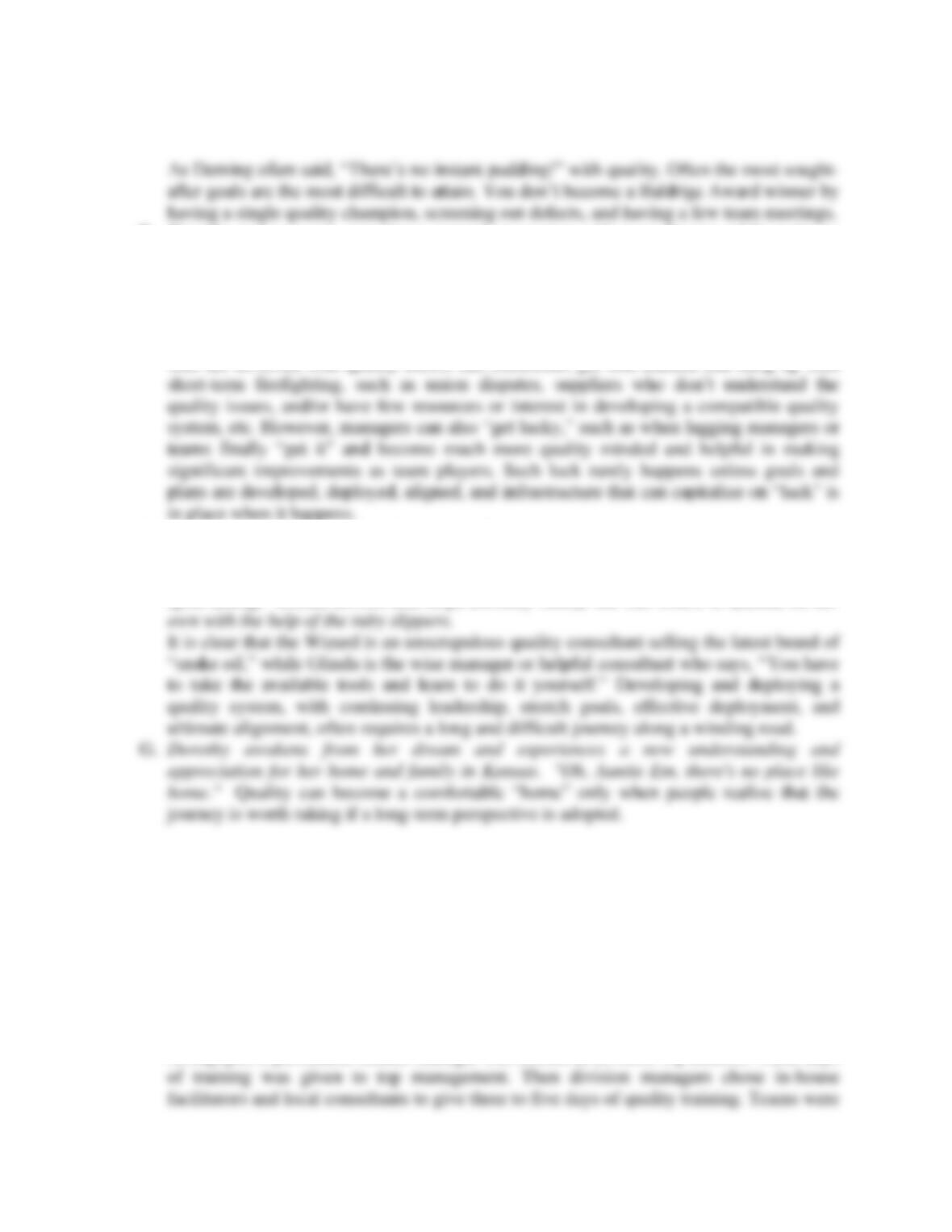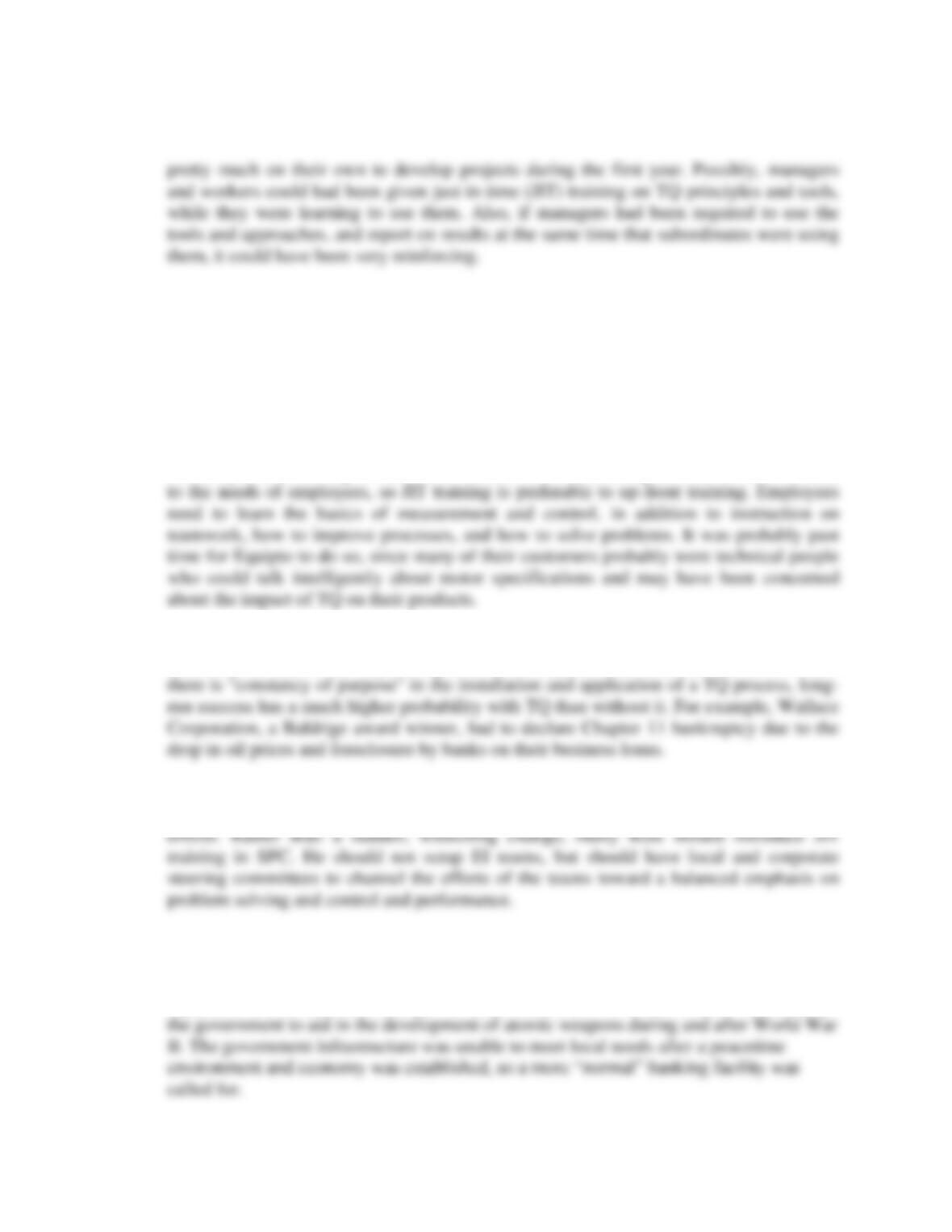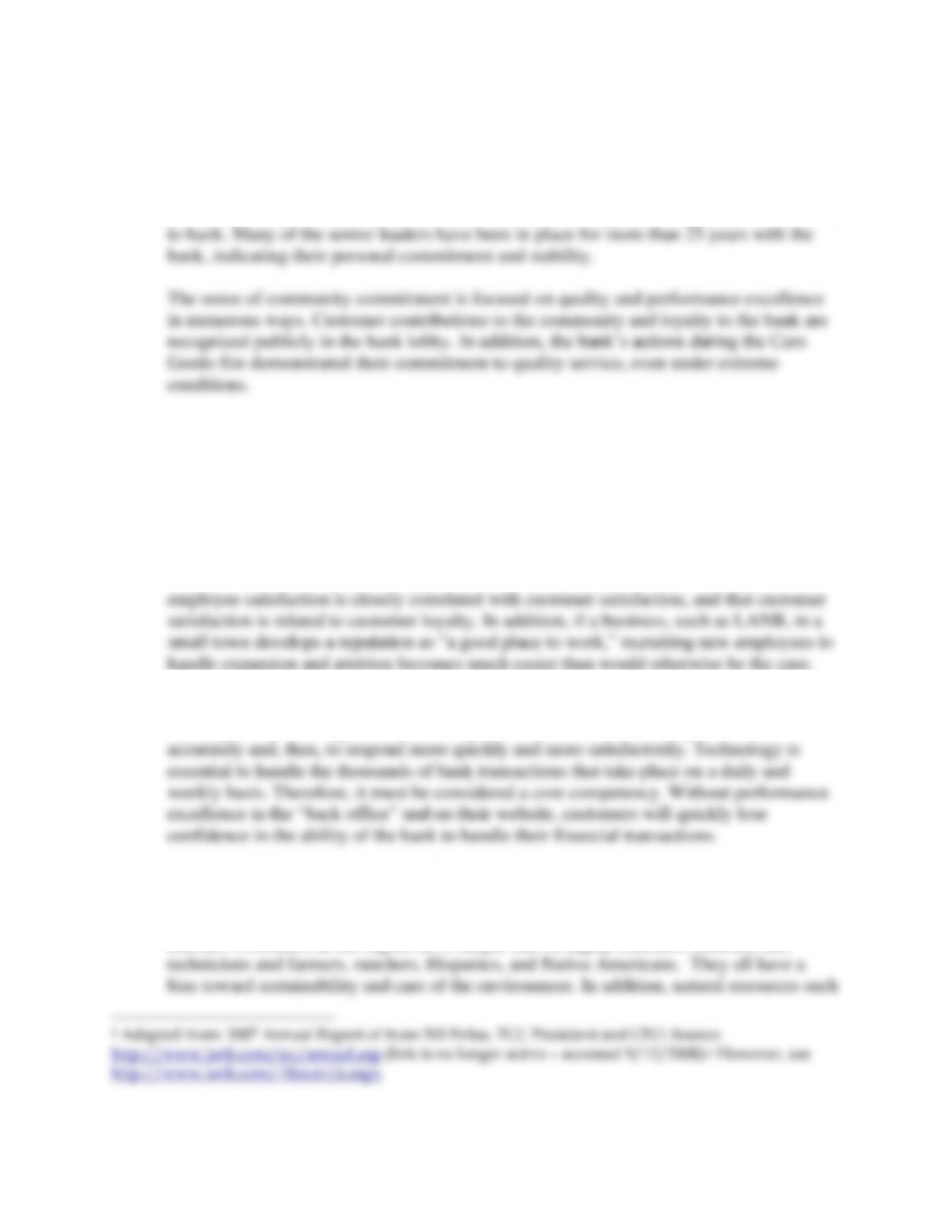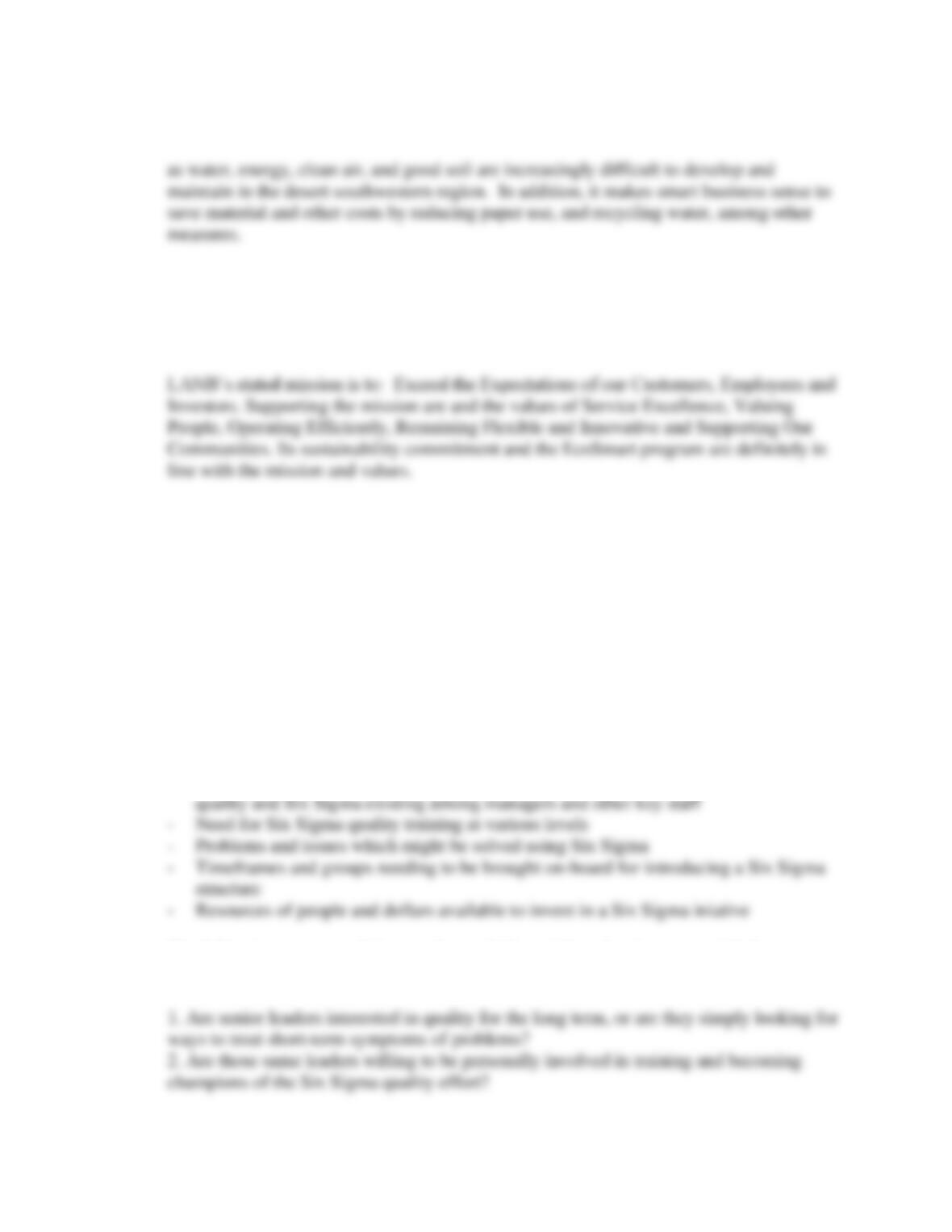Building, and Sustaining Quality and Performance Excellence 13
understanding of purposes and goals and use of complementary measures and
information for planning, tracking, analysis, and improvement at each of the three levels
6. Amazingly, many colleges and universities would not be classified by Senge as "learning
organizations." To do so, they would have to begin to practice what they teach. For
example, colleges of business and engineering would have to go beyond just teaching
about enhancing performance to applying it to their academic and administrative
7. Student opinions may vary, but by this time in the course, they should be “convinced” of
SUGGESTIONS FOR PROJECTS, ETC.
1. This project will provide some interesting contrasts in cultural values, as students “surf”
the Web for answers. You might point the students to some of the websites of Baldrige
winners and some of the subjects of cases in this text, as a starting point.
2. Students will likely find a great deal of variation in terms of commitment to quality and
performance excellence principles. In addition, there will be a lot of variation as to the
“keys to success” of those that do have an on-going commitment. For more process-
oriented manufacturing or service organizations, expect to see the five “universal” best
practices exhibited, including:
a. Cycle-time analysis
